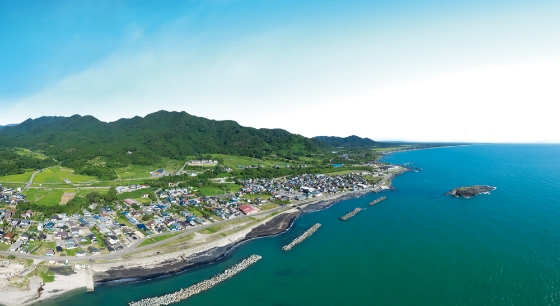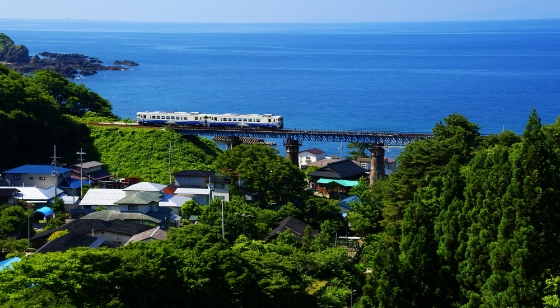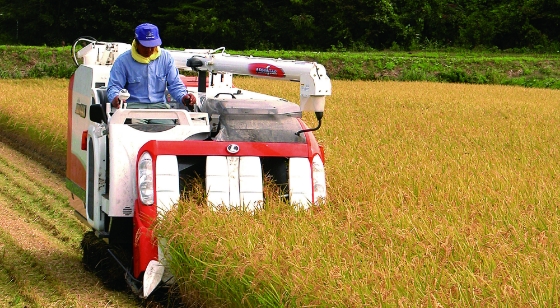I will show you some great sight in our town!
Contact: Happo Tourism Association http://www.happouta.jp/home/
The Takiabi Festival at Shirataki-jinja Shrine
The Takiabi Festival, held at Shirataki-jinja Shrine on August 1, is a festival with an unusual conclusion: participants carry the shrine’s mikoshi (portable shrine) beneath a 17-meter waterfall.
Originally the residents of the town of Happō celebrated their summer festival in a more typical fashion. After purifying themselves and praying at the main shrine, bearers carried the mikoshi through the streets so that others could offer their prayers to the deity. Their circuit complete, the participants then returned the mikoshi to Shirataki-jinja and concluded the ceremony. However, during one particularly hot summer, the bearers went to cool off at the waterfall behind the shrine, carrying the mikoshi with them. This takiabi, or “waterfall rinsing,” was so invigorating that it became a permanent addition to the festival. Now bearers make a ritual circle of the waterfall pool, passing beneath the falls, before returning to the riverbank.
The Takiabi Festival is also unusual in its strict adherence to tradition. Participants may only be men, and they are required to wear a white robe—white being a symbol of religious purity in Japan. Unlike most festivals, the typical food vendors and gaming stalls are cleared out the day before and carrying the mikoshi around the town and into the waterfall is the only thing performed on the day, clearly distinguishing religious ritual from secular revelry.
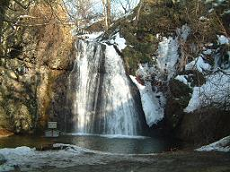
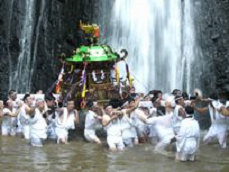
Mase River and Sanjūgama Gorge
The headwaters of Mase River collect inside the Shirakami Sanchi core area and the river flows down out of the mountains into the Sea of Japan just north of the town of Happō. In its descent from the mountains, the river has eroded the land into a steep gorge with many twists and turns around large rock formations.
Sanjūgama Gorge’s name comes from a local story about the river. Most towns in the area around the mountains have been logging towns for much of their history. Before the modernization of Japan in the late 1800s, cut logs were transported by floating them downriver to the sea. Woodcutters harvesting lumber in nearby Hachimori would divide the logs into pieces and pile them into stacked groups. Each piece was about one meter long, and they were bundled together into groups called kama, literally “pots.” They then threw the logs into the river to be collected farther downstream. One day, workers downriver noticed that not all the expected wood had arrived. They traveled upstream to find that 30 “pots” worth of wood had been obstructed or smashed by the boulders along this stretch of river. They then named the gorge sanjūgama, or “thirty pots,” for the amount of wood lost.
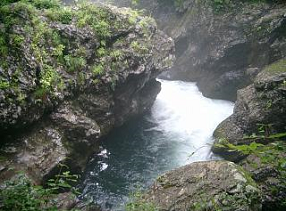
Otonomizu
During the Edo period (1603–1867), the Tokugawa shogunate required all the daimyo lords to follow the shogunate’s “alternate attendance” policy (sankin kōtai). This meant that the daimyo had to alternate between living in their respective domains and the capital, Edo (now Tokyo). This policy allowed the shogunate to ensure that the daimyo of each domain could not become too powerful, as the journey alone could almost bankrupt the lord, not to mention the required gifts and cost to maintain a retinue and a residence in Edo.
According to local legend, when the second lord, or otono, of the Tsugaru clan, Tsugaru Nobuhira (1586–1631) was traveling to Edo on the Ōmagoshikaidō road (now Route 101), he stopped his retinue in an open field to rest. In those days the lord of a domain would travel by palanquin or litter, which required frequent stops not only for the carriers but so that the lord could stretch, a practice known as nodachi. Feeling thirsty, Nobuhira ordered one of his retainers to bring him some water. The retainer found this spring, and when Nobuhira drank the water he is said to have cried out, “kanro, kanro!” meaning “sweet dew, sweet dew.” The spring has been known as Otonomizu, “the lord’s water” ever since.
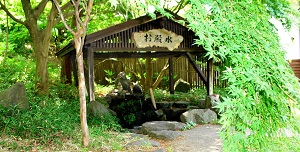
* This English-language text was created by the Japan Tourism Agency

